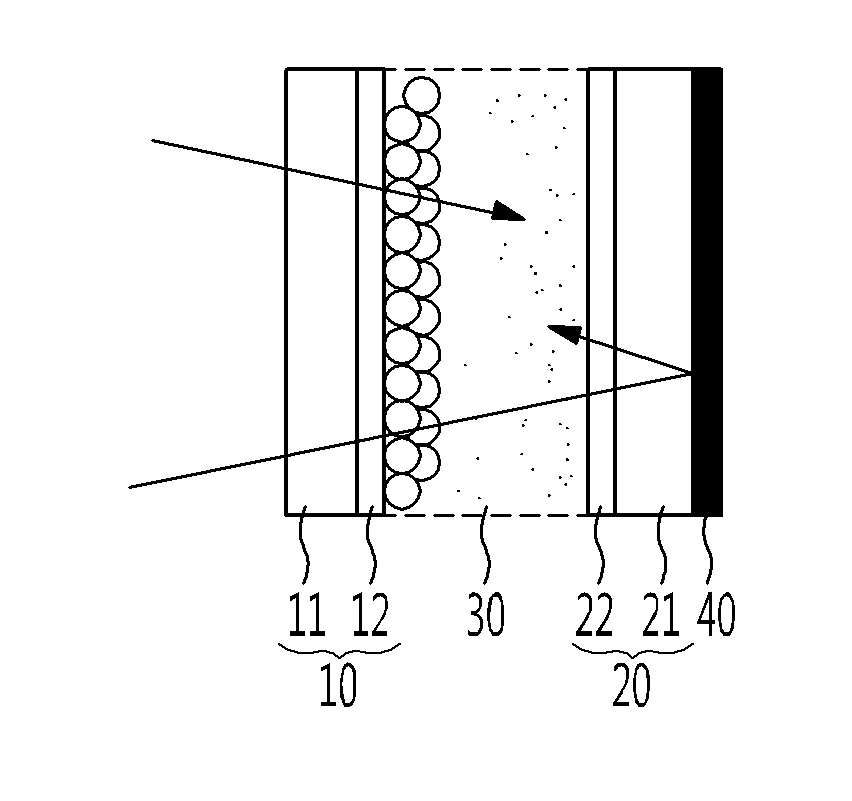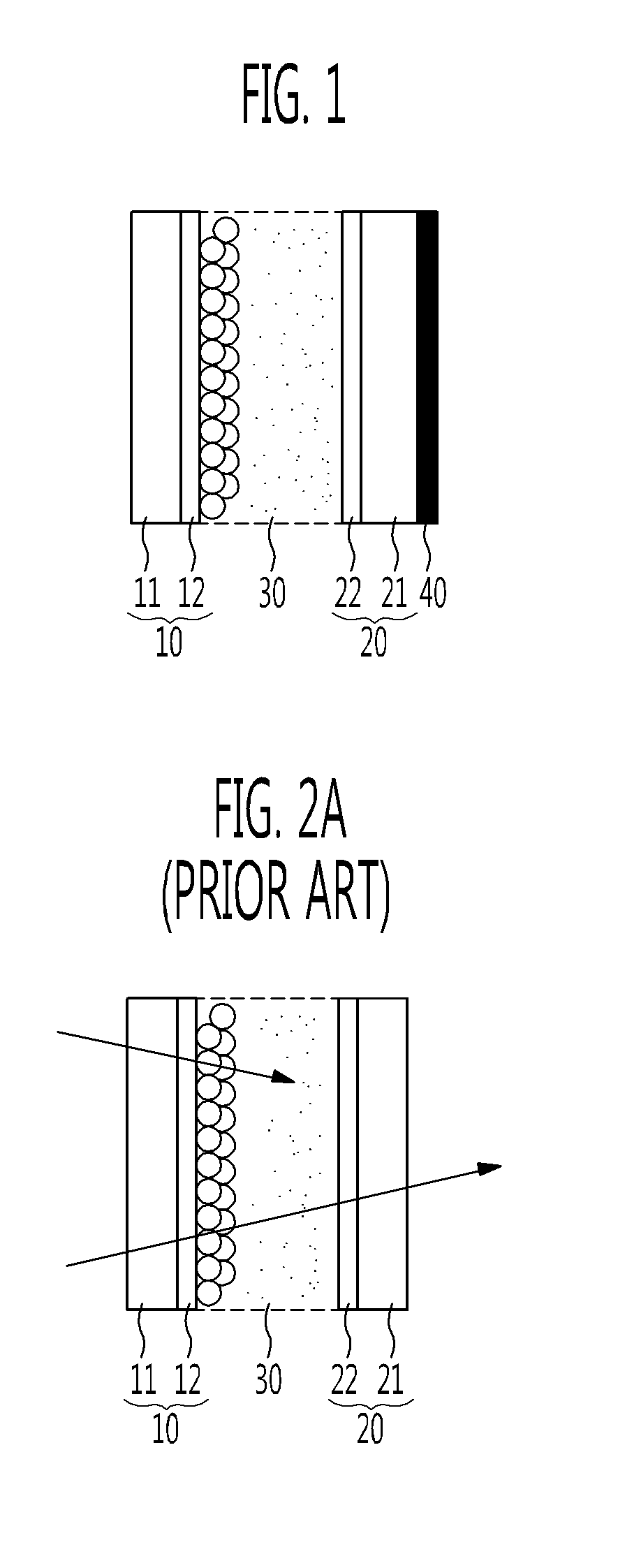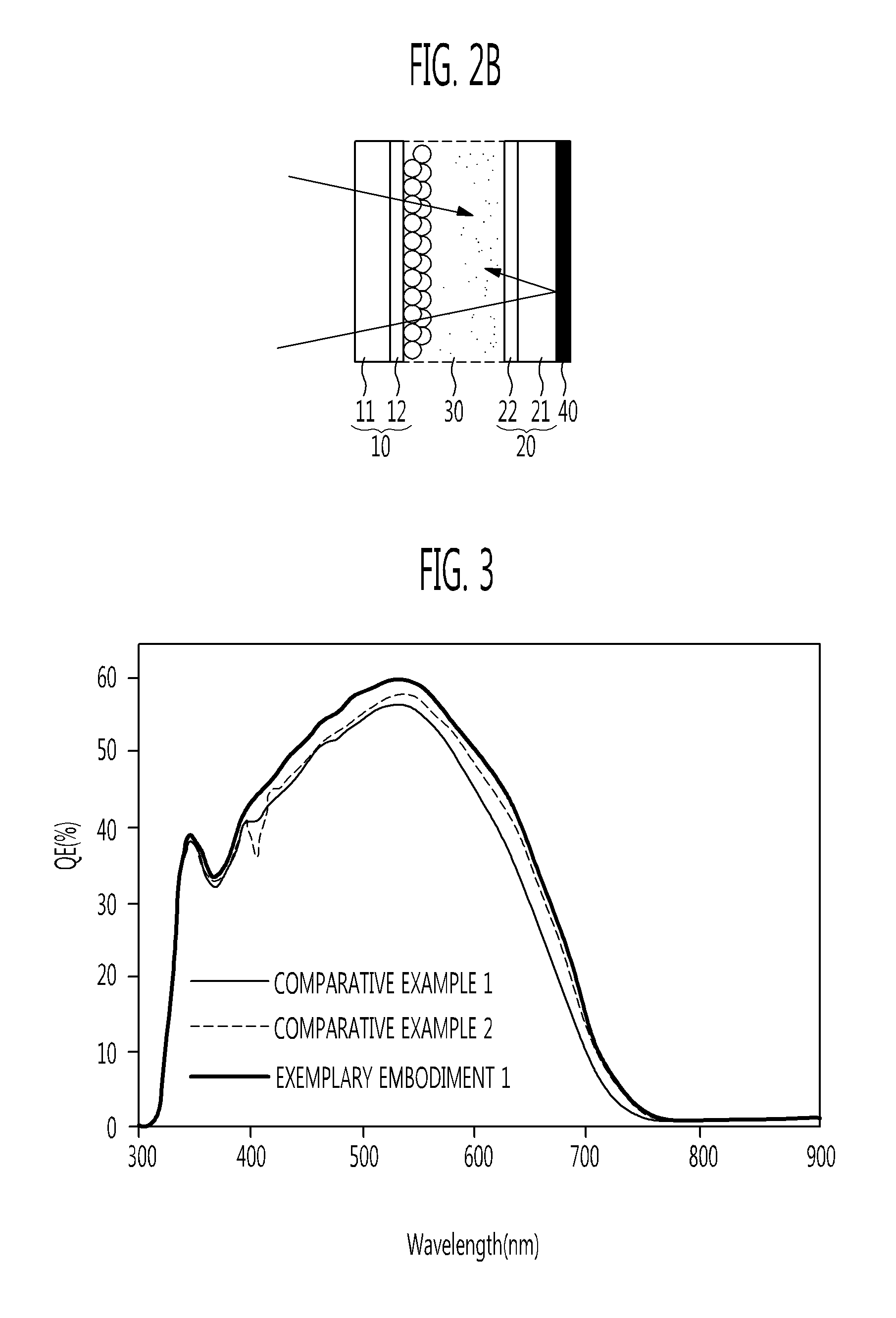Dye sensitized solar cell
- Summary
- Abstract
- Description
- Claims
- Application Information
AI Technical Summary
Benefits of technology
Problems solved by technology
Method used
Image
Examples
exemplary embodiment 1
(1) Fabrication of Working Electrode
[0041]After conductive glass coated with fluorine-doped tin oxide (FTO) (Pilkington, TEC 7) was cut off in a size of 1.5 cm×1.5 cm and underwent ultrasonic cleaning with soapy water for five minutes, the soapy water was completely removed. After this, ultrasonic cleaning with ethanol was repeated three times for five minutes. Subsequently, the FTO glass was completely rinsed with absolute ethanol and then dried in an oven. To increase adhesion to TiO2, the resultant FTO glass was spin-coated with 0.2 M titanium (IV) butoxide solution and completely dried in an oven. The resultant FTO glass was coated with titania using a Dr. Blade and then dried at 100° C. for ten minutes. After this, the resultant FTO glass was annealed at 450° C. to obtain a TiO2 film having a thickness of 10 μm. The electrode fabricated in this way was put in a dye solution mixed with absolute ethanol at a concentration of 0.5 mM and left for 24 hours to absorb dye. In this emb...
exemplary embodiment 2
[0045]A DSC was manufactured to be the same as Exemplary embodiment 1 except that a polymer film having a mirror reflection characteristic was attached to the outside of a counter electrode in a size of 1.5 cm×1.5 cm (width×length) (i.e., attached to an entire surface of the counter electrode), which is larger than an active area.
experimental example
[0048]The DSCs manufactured according to Exemplary Embodiments 1 and 2 and Comparative Examples 1 and 2 were illuminated by a Xe lamp (Oriel, 300 W Xe arc lamp) with an AM 1.5 solar simulating filter, and a current-voltage curve was obtained using an M236 source measure unit (SMU, Keithley). Electric potential had a range from −0.8 V to 0.2 V, and light had intensity of 100 mW / cm2. In this way, energy conversion efficiency was measured. Fill factors were calculated using the conversion efficiency and a formula below, and the results are shown in Table 1.
Fill factor (%)=((J×V)max / (Jsc×Voc))×100 Formula
[0049]In the formula above, J denotes a Y-axis value of the conversion efficiency curve, V denotes an X-axis value of the conversion efficiency curve, and Jsc and Voc are intercepts of the respective axes.
TABLE 1ExemplaryExemplaryEmbodimentEmbodimentComparativeComparative12Example 1Example 2Energy7.89.97.07.5ConversionEfficiency (%)Increase in11.141.407.1Eff...
PUM
 Login to View More
Login to View More Abstract
Description
Claims
Application Information
 Login to View More
Login to View More - R&D
- Intellectual Property
- Life Sciences
- Materials
- Tech Scout
- Unparalleled Data Quality
- Higher Quality Content
- 60% Fewer Hallucinations
Browse by: Latest US Patents, China's latest patents, Technical Efficacy Thesaurus, Application Domain, Technology Topic, Popular Technical Reports.
© 2025 PatSnap. All rights reserved.Legal|Privacy policy|Modern Slavery Act Transparency Statement|Sitemap|About US| Contact US: help@patsnap.com



